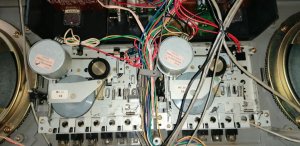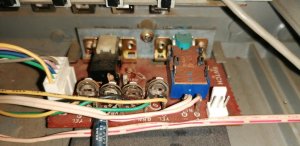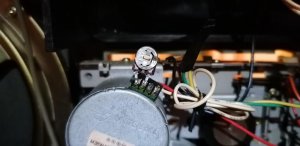Hello,
I am in the process of restoring a Radionette RN-236, a.k.a Tecsonic MX-900E.
The problem I have is that both tapedecks are playing too slow.
The drivebelts are new, and everything is running smoothly.
I have 12,3V to both motors.
There is no speed adjustement on the back of the motors.
They have 4 connectors, +,-,A and B.
According to some googlesearching, the A and B are for speed control at normal and highspeed operation.
There are wires coming from a small circuitboard, to pins A and B, with 4 adjustable pots.
I have tried adjusting them, but the voltage they put out does not change and the motors do not change speed.
Should I be able to adjust the speed on these, or are they for something else?
I find it strange that both motors could be defective and operate at the same speed, or is it common?
Has anybody been able to fix such a problem, or should I try new motors?
/Henrik


I am in the process of restoring a Radionette RN-236, a.k.a Tecsonic MX-900E.
The problem I have is that both tapedecks are playing too slow.
The drivebelts are new, and everything is running smoothly.
I have 12,3V to both motors.
There is no speed adjustement on the back of the motors.
They have 4 connectors, +,-,A and B.
According to some googlesearching, the A and B are for speed control at normal and highspeed operation.
There are wires coming from a small circuitboard, to pins A and B, with 4 adjustable pots.
I have tried adjusting them, but the voltage they put out does not change and the motors do not change speed.
Should I be able to adjust the speed on these, or are they for something else?
I find it strange that both motors could be defective and operate at the same speed, or is it common?
Has anybody been able to fix such a problem, or should I try new motors?
/Henrik





